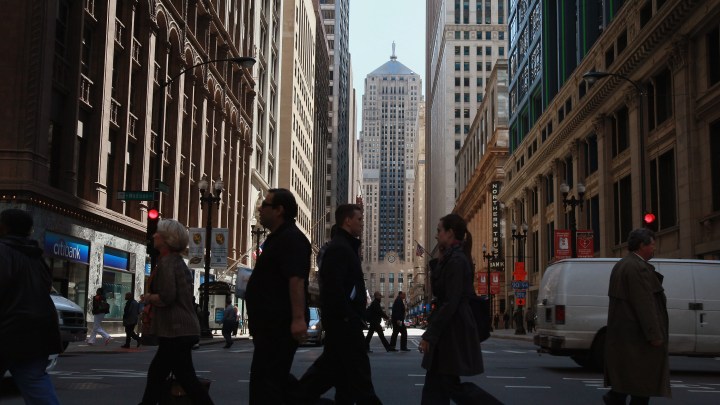
Chicago is turning some of its iconic office buildings into apartments
Chicago is turning some of its iconic office buildings into apartments

The rise of remote work has left many cities with a lot of empty office space. What many cities need is more housing. That’s why Chicago, the city that gave birth to the skyscraper, is offering some financial incentives to developers to give these buildings new life as apartments.
Such adaptive reuse, as it’s called, has been on the rise in the United States in recent years and is seen by many states and cities as a way to revitalize struggling downtowns.
It’s not unlike the transition many cities went through in the 1970s and ’80s with deindustrialization, said urban studies theorist Richard Florida, author of “The Rise of the Creative Class.”
“Cities were the centers of industry and factories and warehouses, food and logistics distribution,” he said. “And all of that stuff is gone.”
Now, New York City’s Meatpacking District, for example, has become a center of fashion and nightlife.
“The end result of this is going to be that the central business district once and for all finally becomes more of a neighborhood,” Florida said. “That it’s less of this functional, work-only, 9-to-5 dull area. And it’s more vibrant and exciting.”
But turning former workplaces into housing is more complicated than switching out cubicles for beds.
Chicago is soliciting proposals to redevelop its imposing LaSalle Street corridor, which is lined with high-rises from the early 20th century.
“There’s just one building after another that is an architectural gem,” said Chris Pemberton, president and CEO of architecture and design firm Solomon Cordwell Buenz. But many of these classical and art deco landmarks have emptied out.
Transforming them is a process Pemberton’s firm understands. Last year, it completed the conversion of the Gothic Revival Tribune Tower from a newspaper office into condos. That’s where Pemberton now lives.
“Finding some of the ghosts in the building and then celebrating those in the finished building, you know, they become these sort of great moments,” Pemberton said.
The flying buttresses and cathedral windows may provide a dramatic backdrop to terraces and fitness facilities, but old office buildings often need costly updates. And many vacant office buildings are not quite as sexy as the legendary Tribune.
There are plenty of languishing office towers from the 1960s, ’70s and ’80s that are a bit more nondescript, said Strachan Forgan, principal at Solomon Cordwell Buenz’s San Francisco office.
He worked on the conversion of a concrete-clad 1970s tower in San Francisco’s civic center about a decade ago.
“It had a fairly austere enclosure that people weren’t very enamored by,” Forgan said.
They stripped off the concrete facade and replaced it with a shimmering glass envelope. Office buildings also often need plumbing, electrical and safety upgrades, such as those needed to comply with seismic standards in California. And the footprints of many offices are so big, the interior must be carved out to bring in natural light.
All of that work adds up, said Jeffrey Havsy, industry practice lead for commercial real estate at Moody’s Analytics.
“If it was that easy, it would have been done, right?” he said.
These projects often involve either the previous office owner or the new developer taking a loss or charging a lot for the units to make these conversions worth it. Significant buildings, like the Tribune Tower, easily command those prices, but less lofty conversions may be a harder sell.
“It becomes much easier with a public-private partnership,” said Havsy — like the one in Chicago.
The city aims to offer incentives from a $197 million redevelopment fund from its tax increment financing program to stimulate about 1,000 units of new housing on the LaSalle Street corridor, a third of it affordable. Those condos in Tribune Tower start in the millions.
There’s a lot happening in the world. Through it all, Marketplace is here for you.
You rely on Marketplace to break down the world’s events and tell you how it affects you in a fact-based, approachable way. We rely on your financial support to keep making that possible.
Your donation today powers the independent journalism that you rely on. For just $5/month, you can help sustain Marketplace so we can keep reporting on the things that matter to you.

















